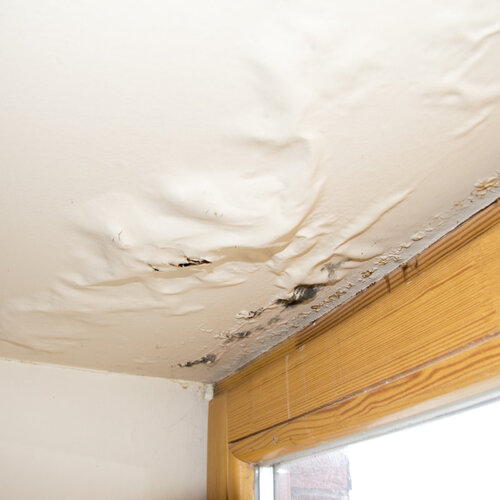Your Residential Most Typical Leak Factors: Analysis
Your Residential Most Typical Leak Factors: Analysis
Blog Article
How do you really feel on the subject of How to Find Water Leaks?
/GettyImages-957479686-f3d2e677f2e749fc98aa207b474c5c1f.jpg)
Leaks not just cause waste of water yet can likewise create unnecessary damage to your residence as well as advertise undesirable organic development. By comprehending and also looking for day-to-day situations that trigger leakages, you can protect your house from future leaks and also unnecessary damage.
Elbowing in roots
The majority of water leaks start outside your house rather than inside it. If you notice an unexpected decrease in water stress, say in your faucet, take some time to go out and also analyze your yard. You could discover damp patches or sinkholes in your backyard, and that might imply that tree roots are getting into water lines triggering water to leak out. You can have your plumber check for breach, especially if you have trees or bushes near your residential property.
Rusty water supply
This could be the cause of staining or bending on your water pipes. If our plumbing system is old, take into consideration replacing the pipelines considering that they are at a higher danger of corrosion than the more recent models.
Faulty Pipe Joints
Pipe joints can degrade over time, resulting in water leakages. If you have loud pipelines that make ticking or banging sounds, especially when the hot water is transformed on, your pipe joints are probably under a great deal of pressure.
Instant temperature level changes.
Severe temperature changes in our pipelines can cause them to increase and get all of a sudden. This growth and tightening may create cracks in the pipelines, specifically if the temperature are below freezing. If you kept an eye on how your plumbing functions, it would certainly be best. The visibility of the formerly mentioned circumstances frequently shows a high risk.
Poor Water Connectors
At times, a leak can be caused by loosened tubes and also pipelines that provide your home appliances. More often than not, shifting is what causes the loosened water Links. You may find when it comes to a cleaning device, a hose might spring a leakage due to drinking throughout the spin cycle. In case of a water connections leakage, you may notice water running straight from the supply line or puddles around your devices.
Clogged Drains
Clogged drains pipes might be bothersome as well as inconveniencing, but they can in some cases end up causing an overflow bring about burst pipes. Keep eliminating any type of products that might go down your drains pipes that could block them to stay clear of such aggravations.
All the above are sources of leakages however not all water leaks result from plumbing leaks; some leaks may come from roofing system leakages. All leakages must be repaired right away to prevent water damage.
Leakages not just cause waste of water yet can additionally trigger unneeded damage to your home and also promote undesirable organic growth. By recognizing and looking for everyday circumstances that create leaks, you can protect your house from future leakages and unnecessary damages. Today, we will look at six leakage causes that may be creating your pipelines to drip.
At times, a leak can be created by loosened hose pipes and pipes that provide your appliances. In situation of a water links leakage, you might discover water running directly from the supply line or puddles around your appliances.
How To Check For Water Leak In Your Home
How To Check for Leaks
The average household's leaks can account for nearly 10,000 gallons of water wasted every year and ten percent of homes have leaks that waste 90 gallons or more per day. Common types of leaks found in the home are worn toilet flappers, dripping faucets, and other leaking valves. These types of leaks are often easy to fix, requiring only a few tools and hardware that can pay for themselves in water savings. Fixing easily corrected household water leaks can save homeowners about 10 percent on their water bills.
To check for leaks in your home, you first need to determine whether you're wasting water and then identify the source of the leak. Here are some tips for finding leaks:
Take a look at your water usage during a colder month, such as January or February. If a family of four exceeds 12,000 gallons per month, there are serious leaks.
Check your water meter before and after a two-hour period when no water is being used. If the meter changes at all, you probably have a leak.
Identify toilet leaks by placing a drop of food coloring in the toilet tank. If any color shows up in the bowl after 10 minutes, you have a leak. (Be sure to flush immediately after the experiment to avoid staining the tank.)
Examine faucet gaskets and pipe fittings for any water on the outside of the pipe to check for surface leaks.
Undetected water leaks can happen without the home or business owner even realizing. If you suspect a water leak, but not able to find the source. It is time to contact a professional water leak detection service, The Leak Doctor.
How To Find a Water Leak In Your Home
https://www.leakdoctor.com/blog/How-To-Check-For-Water-Leak-In-Your-Home_AE197.html

I'm just very interested by How Fast Water Damage Can Ruin Your Home and I am hoping you appreciated the piece. Be sure to take a moment to share this blog entry if you enjoyed reading it. Thank you so much for taking the time to read it.
Effective fix? Call! Report this page